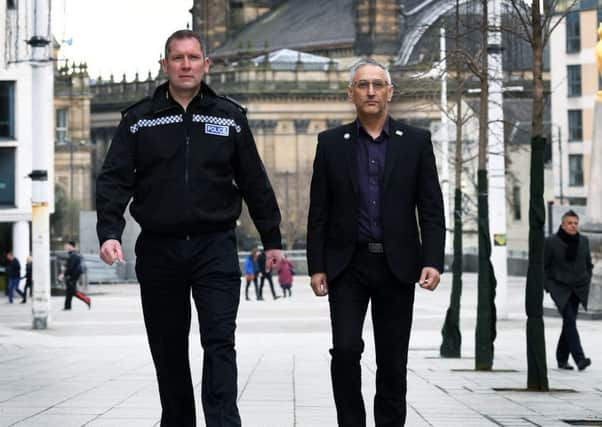Drive to end gang violence in Leeds


As those criminal gangs have become more fluid in the way they organise, it has meant the police, council and community organisations finding more effective ways to keep young people in Leeds on the right track.
Speaking to the YEP for the first of three special reports, Superintendent Matt Davison said one of the key aims of the city’s Ending Gang Violence Strategy was to try to break the link between the different levels.
Advertisement
Hide AdAdvertisement
Hide Ad“At the top of the triangle you’ve got Organised Crime Groups (OCGs), almost professional criminals that are committing crime across the city,” he said. “In the next level we’ve got urban street gangs that often supplement these OCGs. They’re often characterised by wearing bandanas or sticking to certain postcodes.”
Below these are the younger peer groups of teenagers who might band together for social reasons and become involved in lower level criminality or anti-social behaviour in their area.
“We’ve got the OCGs and the peer groups, but we’ve never had the street gangs that you’ve got in other cities,” Supt Davison explained.
“From a police point of view, we would get stuck in with enforcing the law in relation to criminality where we have OCGs that are dealing drugs. That in isolation wasn’t the answer though.
Advertisement
Hide AdAdvertisement
Hide Ad“As we send some people to prison we sometimes create a vacuum, they’re actively trying to recruit young people in.”
This was the case back in 2011 following the jailing of some key members of an OCG known as The Flock, something of a rarity for Leeds in that the criminal gang had given itself a name.
Supt Davison said: “Some of the younger members then referred to themselves as The Young Flock. That was really concerning for us.
“It tends to be the younger siblings, family members and people living in the same communities [who get involved]. We did some really intensive work around those individuals.
Advertisement
Hide AdAdvertisement
Hide Ad“We want to force the disconnect between OCGs and our young people who are often vulnerable and impressionable.
“As a lot of the older ones came out of prison, we tried to do rehabilitation work too.”
Joining the Home Office-funded Ending Gang and Youth Violence programme in late 2012 brought greater focus on this work, with Chapeltown and Harehills remaining the areas of the majority of activity today.
It was from these communities that the police drew the first cohort of 11 to 15-year-olds who were considered at risk.
Advertisement
Hide AdAdvertisement
Hide Ad“The first 12 that we worked with were named by the police because a number of the other partners around the table didn’t want to be seen to be betraying the trust of youngsters they were working with,” Supt Davison said. “The community can be put in a difficult position really if they’re seen to name people. We’re talking about a number of different people that have got a good relationship and good understanding of people they’re working with.”
And it is these people – teachers, youth workers, coaches – who Supt Davison believes have a key role to play, not only in providing diversionary activities such as sports, training and volunteering but also by speaking with credibility about the challenges young people in those neighbourhoods face.
It is an approach that has led police to feel that while there is no room for complacency, progress is being made here.
Supt Davison concluded: “In the current climate, a lot of things are going in the wrong direction but compared to other cities we seem to be in a really good place.”
